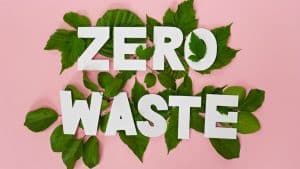
10 Methods for Increasing Industrial Waste Recycling
By Jane Marsh
An uptick in environmental awareness at an industrial level makes recycling capacity a non-negotiable facet of operations. Industrial waste recycling has inadequacies, yet participation and interest will mend them faster than resistance due to the lack of access. Industrial advantages are monumental for corporations choosing the planet’s betterment over defaulting to landfills or illegal dumping.
1. Implementing Source Reduction Strategies
Industry experts must identify their most prominent waste sources to see how they can reduce or eliminate them. A principal contributor is chemicals, and 16,859 facilities in the U.S. reported attempting to remedy sources like styrene or antimony.
Material substitutions, process changes, and equipment modifications are some of the best ways to adapt to new operations that produce fewer waste streams. Corporations must reimagine products and refine manufacturing to reduce trash and rely less on toxic sources.
Another method of reduction is through buying used equipment rather than new. The used market limits new manufacturing of products each year and reduces the overall levels of steel, iron, and other metals consumed during the manufacturing process.
2. Adopting Waste Segregation and Sorting Systems
Once a facility undergoes source reduction, it can optimize remaining waste streams. Data collection is pivotal at this stage because it identifies where to prioritize reduction efforts. Eventually, it will manifest into more curated waste separation, labeling, sorting, and management. Stakeholders may refer to local and federal laws for environmental agencies’ top recommendations for specific waste streams.
Segregating waste is not enough. Businesses must also practice hazard mitigation in their new systems to support environmental efforts. Sorting is more than designating waste by material. Corporations must also defer some trash to energy initiatives or upcycling instead of defaulting to waste. Crafting transparent and clear documentation and guidance for operators is crucial to ensure consistency with a new waste method.
3. Investing in Advanced Recycling Technologies
Inadequate assets might be why an industrial facility is held back from recycling as much waste as possible. Waste-to-energy techs like pyrolysis or gasification are a powerful and productive way to redirect applicable industrial waste for a circular operation. Does the facility need lift stations for maneuvering wastewater? Would IoT devices increase awareness of trash production?
4. Establishing Closed-Loop Systems
Installing a closed-loop system for industrial waste recycling allows process automation. This happens through a combination of technologies and corporate practices that establish how waste returns to the beginning of its life cycle.
Finding infinitely recyclable materials fed back into the production loop is essential for encouraging a circular economy. It allows scraps and defects to break down and return to manufacturing without waste materials or generating excess waste.
5. Partnering with Recycling and Waste Management Companies
Partnerships are among the most significant ways to support circular technologies and initiatives. If an industrial facility is under-equipped to recycle waste responsibly, seeking advice is the key to transitioning to streamlined waste collection. This also empowers B2B relationships and demonstrates federal interest in investing in sustainable waste recycling projects.
6. Educating and Training a Dedicated Team
A waste management team is necessary for successful industrial facilities, but going a step further to have a specific team for waste recycling is even better. Providing adequate training based on industry standards is crucial. The recycling meta changes constantly with the advent of innovative sustainable technologies. Ensure employees have access to subsequent training as needed.
7. Implementing Incentive Programs
One of the most prominent barriers between industries and recycling is disinterest. Enforcing an incentive program for employees and partners will eliminate resistance, develop more vigorous habits, and eliminate the need for an incentive program.
8. Conducting Waste Audits and Assessments
Internal assessments inform teams if their objectives are practical or if they need to direct attention to new waste management strategies. Every project should follow the waste management hierarchy for guidance, organizing, and dealing with industrial waste in this order:
- Source reduction
- Reuse
- Recycling
- Energy recovery
- Treatment and disposal
External audits from regulatory agencies are also crucial for ensuring practices are legal and healthful for the planet. Third-party verifications are critical for informing more influential bodies on how they formulate criteria. Participating in obtaining these eco-friendly certifications and compliances assists the greater good.
9. Engaging in Industry Collaboration and Knowledge Sharing
No information regarding green practices should be shielded behind patents, copyrights or secret-keeping. Knowledge-sharing is the most important aspect of reversing the climate crisis. Every industry producing waste should share its effective strategies and ideas with others for a more meaningful impact. Conferences and industry events are the best platforms.
10. Monitoring and Reporting Progress
Teams must determine relevant environmental and waste-related KPIs to measure progress. Are they appropriate and achievable compared to corporate and national climate objectives?
Inching Closer to Industrial Waste Recycling
Implementing one of these methods propels the rest to decarbonize and lower the carbon footprint of a previously toxic and waste industrial structure. More corporations committing to eco-friendly waste management revise sector-wide expectations. Continuous improvement and collaboration allow facilities to advance a climate-friendly future.
Article by Jane Marsh
Jane works as an environmental and energy writer. She is also the founder and editor-in-chief of